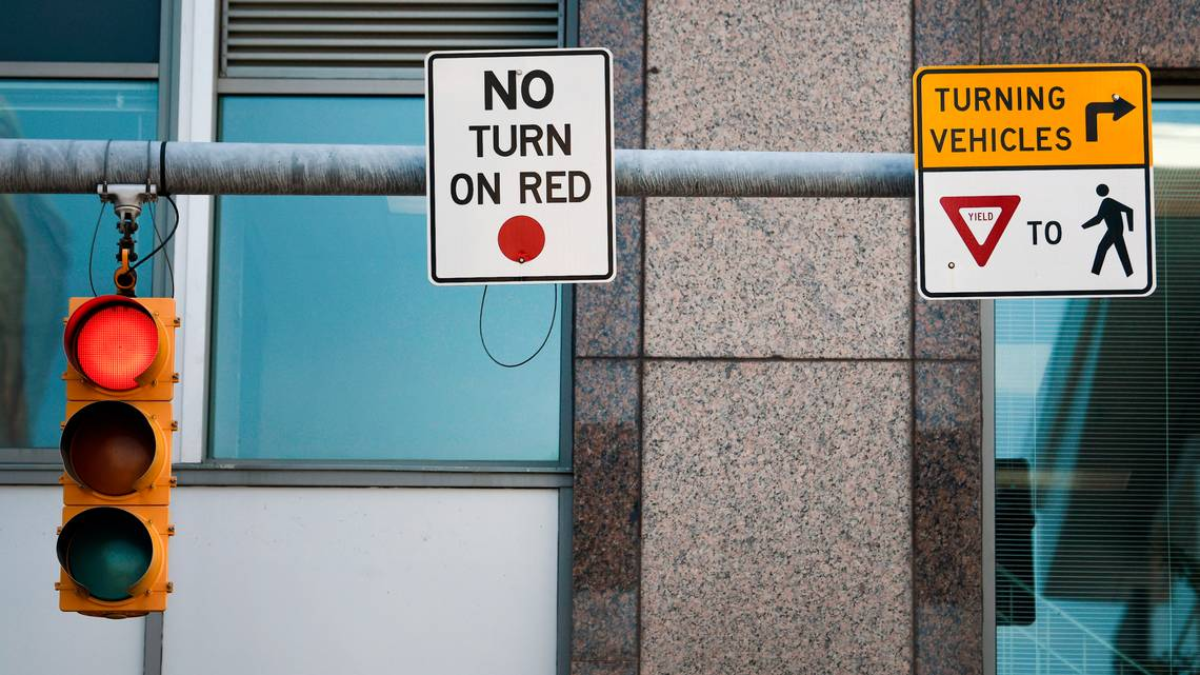In recent years, many cities across the United States have reevaluated their traffic regulations, particularly when it comes to right turns on red lights. While the ability to turn right at a red light is a convenience for many drivers, certain urban areas have implemented stricter rules to improve safety. This includes banning right turns on red in specific intersections or neighborhoods. In this article, we’ll explore which cities are restricting right turns on red, the reasons behind these changes, and how they affect drivers.
New York City: Pioneering Pedestrian Safety
New York City has long been at the forefront of pedestrian safety initiatives, and restricting right turns on red has become a key part of this effort. While right turns on red are permitted in many areas of the city, certain busy intersections, particularly in Manhattan, have implemented restrictions. The city’s Vision Zero program, which aims to eliminate traffic fatalities, has influenced many of these decisions.
In some cases, signs prohibit right turns on red at intersections with high pedestrian traffic, such as near major subway stations, parks, or busy shopping areas. The goal is to protect pedestrians who are crossing at these intersections and reduce accidents caused by drivers failing to yield.
San Francisco: Improving Safety in High-Traffic Zones
San Francisco has also joined the trend of restricting right turns on red in certain parts of the city. Known for its dense population and narrow streets, San Francisco faces unique traffic challenges. The city has implemented these restrictions at some of its busiest intersections, particularly in areas with heavy foot traffic and high numbers of tourists.
The city’s Department of Transportation has cited pedestrian safety and the city’s narrow roads as key reasons for restricting right turns on red in areas like downtown and near popular tourist attractions like Fisherman’s Wharf. These measures are part of the city’s broader goal to improve road safety and decrease accidents involving pedestrians and cyclists.
Los Angeles: Addressing High-Pedestrian Traffic Areas
Los Angeles, with its sprawling roadways and high vehicle volume, is another city taking steps to restrict right turns on red in certain zones. The city has focused on areas with dense pedestrian traffic, such as downtown Los Angeles and the Hollywood district, where pedestrians are more likely to be crossing streets at all times of the day.
While right turns on red are still allowed in many areas, Los Angeles has installed numerous “No Right Turn on Red” signs at key intersections to prevent drivers from turning when pedestrians have the right of way. This is part of the city’s ongoing efforts to protect its most vulnerable road users and ensure safer streets.
Chicago: Restrictions Near High-Use Areas
Chicago has made significant changes to its traffic laws to improve pedestrian safety, particularly near busy areas like the Loop and the Magnificent Mile. The city has restricted right turns on red at certain intersections where pedestrians frequently cross. In many cases, these restrictions are designed to reduce accidents involving tourists, shoppers, and other pedestrians.
Chicago has been working to improve its public transportation options and create pedestrian-friendly zones. The elimination of right turns on red in certain high-traffic areas is one part of the city’s larger strategy to create safer streets for both pedestrians and drivers.
Washington D.C.: Prioritizing Pedestrians and Cyclists
Washington D.C. has also seen an increase in the number of intersections where right turns on red are restricted. The city has been focusing on pedestrian and cyclist safety for years, with several initiatives aimed at reducing accidents and promoting non-motorized forms of transportation. These initiatives include the creation of designated bike lanes and expanded pedestrian zones, as well as restrictions on right turns at busy intersections.
D.C. has installed “No Right Turn on Red” signs in areas with high pedestrian traffic, particularly in neighborhoods near schools, parks, and government buildings. The city’s goal is to reduce pedestrian fatalities and improve safety for all road users.
Seattle: Implementing Red Light Right Turn Bans for Pedestrian Safety
Seattle, known for its walkable neighborhoods and emphasis on public transit, has also introduced restrictions on right turns on red in certain parts of the city. With a growing number of pedestrians and cyclists using the streets, the city has focused on areas with heavy foot traffic, including the Capitol Hill and Belltown neighborhoods.
Seattle’s Department of Transportation has emphasized the importance of pedestrian safety as the city continues to grow. By restricting right turns on red in specific intersections, the city aims to reduce the number of accidents involving pedestrians and drivers.
Boston: Curbing Traffic Accidents in High-Pedestrian Zones
Boston has joined the movement to restrict right turns on red in certain high-pedestrian areas. The city has implemented bans on right turns at specific intersections to improve safety for pedestrians and cyclists, particularly in areas near public transportation hubs and popular tourist attractions.
In addition to restricting right turns on red, Boston has also focused on increasing the visibility of pedestrians and installing more pedestrian-friendly infrastructure, such as crosswalks, bike lanes, and signalized intersections.
Conclusion: The Future of Right Turn on Red Restrictions
As more cities implement restrictions on right turns on red, it’s clear that pedestrian safety is becoming a top priority. These new traffic laws are designed to reduce accidents and improve road safety, particularly in urban areas with high foot traffic. Drivers need to be aware of the specific rules in the cities they are driving in to avoid fines and ensure they are driving safely.
For more detailed coverage on traffic laws and road safety, visit U.S. Department of Transportation.
Disclaimer – Our team has carefully fact-checked this article to make sure it’s accurate and free from any misinformation. We’re dedicated to keeping our content honest and reliable for our readers.








